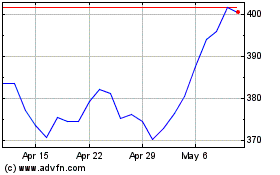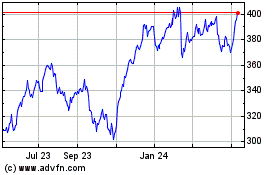Bank of Mexico Gov. Agustín Carstens sat down on Friday, Aug.
26, 2016 with Wall Street Journal reporters Jon Hilsenrath and
Harriet Torry on the sidelines of the Kansas City Fed's monetary
policy research symposium in Jackson Hole, Wyo.
He discussed Mexico's monetary policy and public sector debt, as
well as the debate over negative interest rates.
Here is a transcript of the interview, lightly edited for length
and clarity.
MR. CARSTENS: We are all very into our own problems, and I think
that this year, the topic is very thought-provoking. And I think
we're all sort of reflecting a lot of -- on the toolbox of monetary
policy. (Laughs.)
MS. TORRY: Well, one of the things that we've both been
interested in talking about is negative rates. Of course, this
isn't something that is directly affecting you at the moment.
MR. CARSTENS: Yeah.
MS. TORRY: What are your thoughts on negative rates, and how
they -- how [they] impact emerging markets?
MR. CARSTENS: Well, I mean, I think something that has been made
clear during this -- today's session, and even during -- it was an
important part of the message of [Federal Reserve] Chair [Janet]
Yellen, was that there are equivalent ways -- (chuckles) -- to get
the same, the same result. And you know, (inaudible) negative rates
don't seem to be a good idea.
I think that the real relevant thing is that today we're
discussing, in a way, pretty much the boundaries of monetary policy
-- you know, how far monetary policy can go in terms of promoting
economic growth, in terms of returning to a much -- to a normal
performance of inflation. And, it has -- it was made clear by Chair
Yellen's speech that we didn't have the right toolbox and that we
have been in the need to -- I mean, the central banking community,
but in particular advanced economies' central banks have been
facing the need to -- improvise as events unfold. And I think that
that has a lot of value added, I think, that to have the benefit of
hindsight and to evaluate, you know, how far can we go with
monetary policy and in particular what is the toolbox that is
necessary to face even some scenarios that were unthinkable many
years ago.
JON HILSENRATH: Coming back to the point about negative rates,
what's your assessment, to the extent that you've looked at this,
of the costs and benefits of negative rates?
MR. CARSTENS: Well, I mean, I still -- my colleagues, central
bank colleagues, have expressed convincing arguments about the net
benefits of those measures. I mean, certainly it has been
recognized that in some cases, it might affect commercial banks. It
might weaken their strength and it can weaken creation. But if you
add up all together, we're still not at the point where we have net
costs. I sort of -- I mean, I agree with that.
And I also felt that there was a little bit of a pushback in the
audience today when extreme negative rates were suggested.
(Laughs.)
So, I mean, I think that so far it has worked well, but at the
same time I think that prudence is called for as we move
forward.
MR. HILSENRATH: But you say it could -- it could hurt commercial
bank profits and thus their willingness to lend?
MR. CARSTENS: And you know, commercial banks, I mean, their --
yes, their capacity to lend, yes.
MS. TORRY: I wanted to ask your views on Mexico's efforts to
contain its growing public-sector debt. It is 50 % of [gross
domestic product] this year, and Moody's and Standard & Poor's
have reacted. What are your views on that?
MR. CARSTENS: Well, of course it is important. Just if you --
pretty much the day before Moody's made this ruling, the Ministry
of Finance came out with a very detailed analysis on the public
finances, offering far more information, putting into perspective
the dynamics of public finances in Mexico.
And I see a real desire of the Ministry of Finance to contain, I
would say, the growth of public debt over GDP and in a way make
this not to be an issue as we move forward.
Certainly, there are some dynamics that are under way that have
been affecting the public finances. Some of them have been, for
example, the growth in pensions. And at the same time, also, the
fall in the price of oil has been very, very, very important. There
has been an adjustment. For example, traditionally, oil-related
income would finance more than 30 % of expenditures, and lately it
has been only 13 %. So that is -- that is a very significant
shock.
But it is very, very clear that we need to contain the growth of
debt over GDP. And in the coming weeks, on the 8th of September,
the federal government has to present its fiscal plan for next
year. And my sense is that they will be reassuring in this
regard.
MS. TORRY: OK. What is the level of risk you see on how rising
debt is contributing to the weakness of the peso?
MR. CARSTENS: Well, I mean, I -- to this -- at this stage, I
don't -- I don't sense that that has been a major issue. I think it
is -- for some time already -- for some time already, the Mexican
government has been taking action, and in a way this was a
surprising call by Moody's, no?
At the -- at the beginning of the year, we had some issues
related to [state oil company] Pemex and decisive actions were
taken. This year, the government reduced its expenditure goals in
February, and then also when the Brexit news came out.
So I think that, fiscally, the government has been taking a very
precautionary -- has had a precautionary attitude this year. It
also has made a very important commitment that is out there, and
that is that for the first time since 2009, the Mexican government
will have a primary fiscal surplus.
So probably, yes, a little bit what has affected the ratio is
that growth has been slower than anticipated, but that also has
been the fact that we have seen in terms of global growth. And what
has been advocated in fora like the [International Monetary Fund],
the G-20 and so on is that you have backed structural reforms and
so on, and Mexico has done that.
So I think that sometime soon, I expect that more growth will be
seen as a result of -- as a result of the reforms. Also, my sense
is that there are expectations for stronger growth in the U.S., and
that should help Mexico.
MR. HILSENRAT H: There's also expectations, as Yellen said
today, that the Fed is going to raise rates again. Given the
slower-than-expected growth in Mexico, the impacts of Fed rate
increases on the currency, are you at all -- or how well-positioned
is the Mexican economy to rate increases here?
MR. CARSTENS: Well, I mean, this is not a new phenomenon.
(Laughs.) This is -- this is something that has been on the table
for quite some time. In a way, it precisely shows that the U.S.
economy is recovering, the labor market is showing better
performance, and so on. And we have mentioned in our -- Banco de
Mexico has mentioned in its monetary policy communiqués already for
quite some time that one of our most important variables that we
will follow in making our decision is the monetary -- the relative
monetary policy stance of Mexico vis-à-vis the U.S. So we are
prepared, I would say, to react to the situation if we see that the
action of the Fed's affects inflation, and the transmission
mechanism probably would be the exchange rate.
So if the action that the Fed might take, it has an impact on
expected inflation, we will have to tighten monetary policy. So the
interest rate differential versus the U.S. is very important, and
certainly plays a very important role as we decide our own monetary
policy action.
MR. HILSENRATH: So when we've talked about this in the past, it
sounded like you were prepared to move when the Fed moved. Is this
now a case where you're prepared to see the Fed move and then see
how exchange rates respond before making a decision? Or are you
committed to going one for one with any Fed action?
MR. CARSTENS: Well, I mean, this is one more of the determinants
of inflation. If you see this year, we have had two hikes in
addition to what the Fed did. The Fed moved in December of last
year. We moved then in parallel. Then we tightened 50 basis -- then
we tightened 50 basis points in February and we tightened an
additional 50 basis points in the summer, no?
MR. CARSTENS: So, in a way, I mean, that shows that we are not
going to wait for Fed actions. Fed actions might trigger some
reaction from our side, but we will also respond to other
determinants of inflation. It might also be that what we have been
seeing in terms of the developments of the exchange rate shows some
anticipation of the Fed action. So, you know, if the Fed action is
sort of anticipated and is reflected in the market and we see that
that doesn't have consequences on inflationary expectations, we
might not act. But if that's not the case, we are prepared to
act.
MR. HILSENRATH: Right. So I just want to be sure I understand
that. It sounds like you're saying that, because you've already
moved pretty aggressively two times this year, it might not be the
case that you have to act again, even if the Fed does -- that it
depends on market response.
MR. CARSTENS: Yeah, yeah. But we have underlined that we will be
watching it very carefully. (Laughs.)
(END) Dow Jones Newswires
August 27, 2016 15:20 ET (19:20 GMT)
Copyright (c) 2016 Dow Jones & Company, Inc.
Moodys (NYSE:MCO)
Historical Stock Chart
From Mar 2024 to Apr 2024

Moodys (NYSE:MCO)
Historical Stock Chart
From Apr 2023 to Apr 2024
